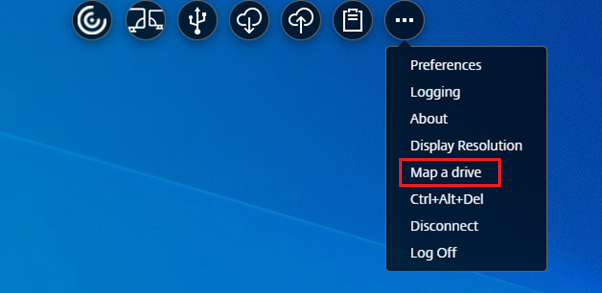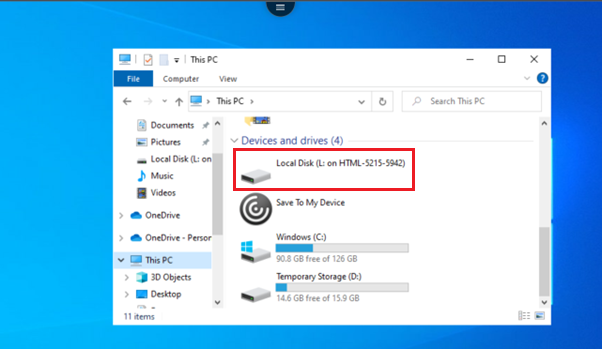File handling
File Transfer
By default, users can:
- Upload files from a local download folder or attached peripheral and seamlessly access the data from a Citrix Virtual Apps and Desktops or Citrix DaaS sessions.
- Download files from a Citrix Virtual Apps and Desktops or Citrix DaaS session to a folder or peripheral on their user device.
Citrix Workspace app for HTML5 supports downloading files on a MacBook using the Safari browser.
Limitations
- A user can upload or download a maximum of 10 files at a time.
- Maximum file size:
- For uploads: 2147483647 bytes (2 GB)
- For downloads: 262144000 bytes (250 MB)
Client Drive Mapping
Starting with the 2303 version, the Client Drive Mapping (CDM) feature supports folder mapping on the local machine so they’re accessible from within a session. You can map any folder from the local machine, if the folder doesn’t contain system files.
The end user can do the following operations:
- Copy files and folders from the local machine to the mapped drive in the session.
- View the list of files and folders in the mapped drive.
- Open and read file contents in the mapped drive.
- View the file properties (modified time and file size only) in the mapped drive.
This feature provides the advantage of accessing both virtual desktop drives and local machine drives together in the file explorer within the HDX session. This feature is supported on desktop platforms, Google Chrome, and Microsoft Edge Chromium browsers only.
Note:
- By default, this feature is enabled.
- Cloud based drives, for example, OneDrive and GDrive can be mapped provided it’s supported by the cloud provider.
Known limitations
- You can’t rename files and folders inside the mapped drive.
- Mappings will only have the name of the folder and not the full path.
- If your local folder has hidden files, and you mapped the same folder, the hidden files are visible inside the session in the mapped drive.
- You can’t change the file property to read-only access in the mapped drive.
- When you map a folder from the removable device and if you remove the device during an active session, you can’t use the mapped drive inside the session. You must remove the mapping manually.
Known issues in the feature
- When you use the CDM feature on mobile platforms, the dialog box gets truncated from the top.
Access level
When you enable the feature, you can set the folder or drive access levels. For example, if an administrator sets availableAccessLevels as [2, 3], the end user can view the Read-Only Access and No-Access options in the drop-down list.
How to use the feature
-
Navigate to the Toolbar > more (…) > Map a drive.

-
Select the Access level for the folder or the drive. The drop-down list option that you see depends upon on the access level set by your organization’s IT administrator for your profile.

-
Select a Drive letter and click Browse to navigate to your folder or drive in your local machine.

- Click Add.
-
Disconnect and reconnect the session.
The session displays the drive letter that is mapped inside the session.